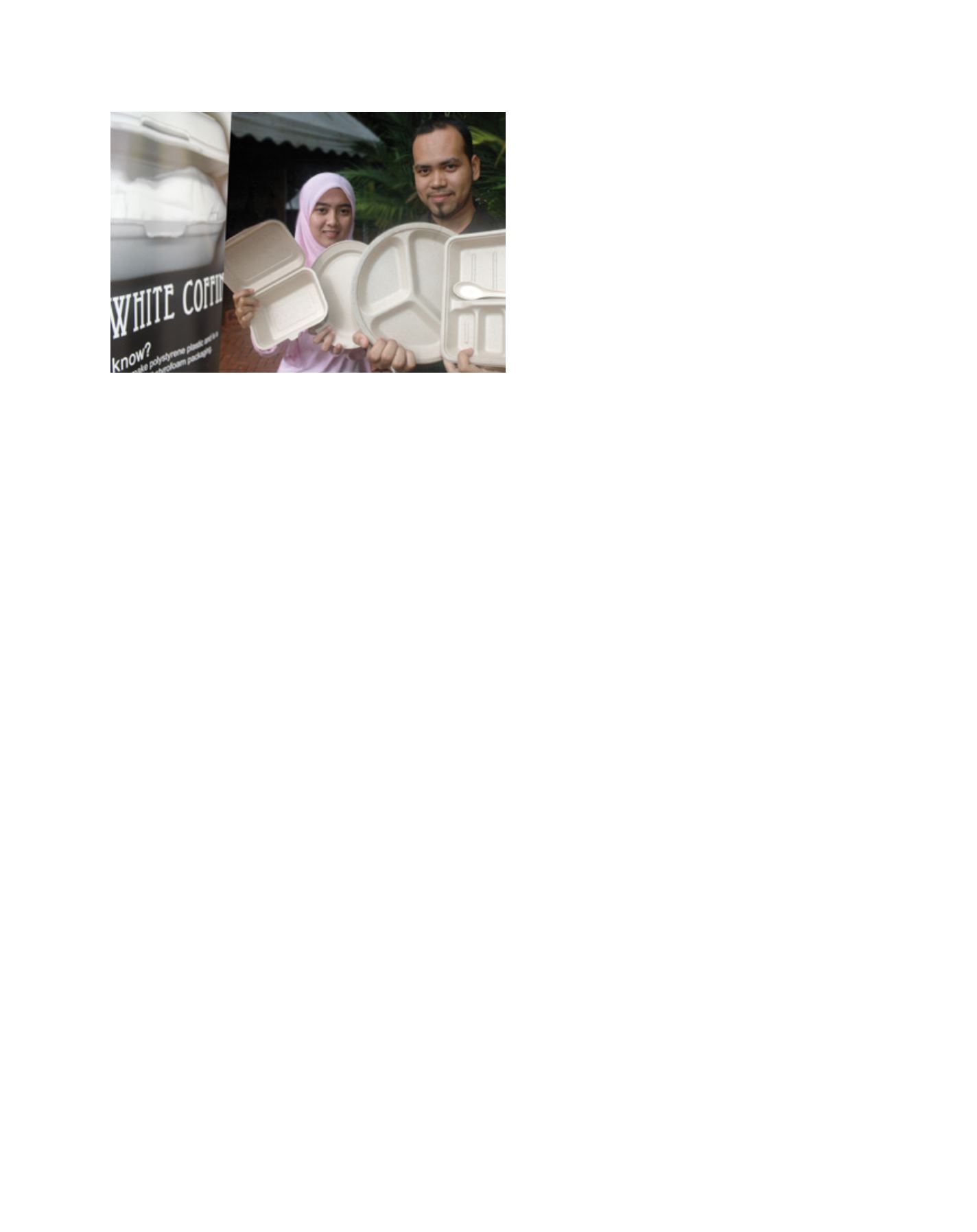

[
] 109
attention to the needs of the disempowered community while operating
at the nexus between the scientific world and the policy community.
One of the first priorities of the centre was to coordinate the devel-
opment of the sustainability roadmap, which was completed in 2009.
Currently CGSS is involved in a series of ‘roadshows’ to catalyse the
roadmap’s effective implementation while concurrently realigning and
building synergies among the abundant sustainability-related initiatives
already initiated at USM, as well as those of surrounding communities,
both nationally and internationally.
The centre offers multi-disciplinary training and a postgraduate
programme, MDP, in collaboration with Columbia University, New
York. CGSS also conducts cluster-based research, publishes extensively
on the topic of sustainability, and promotes strategic network activities
in areas such as sustainability in higher education, science-technology
innovations for sustainability, climate change, biofuels and food secu-
rity, and front-end technologies for sustainable development.
High value flagships
11
The following four flagship initiatives are examples of USM’s capa-
bilities to deliver on sustainability promises:
(i) Archaeological windfall
: a USM team from the Centre for Global
Archaeological Research, has unearthed stone tools at Bukit Bunuh,
Perak, Malaysia dating back 1.83 million years, older than the 1.5
million-year-old hand axes previously found in Africa. Once fully
confirmed, this discovery will replace the ‘out of Africa’ theory of
human origin by what might be called the ‘out of Malaysia’ theory
for the oldest evidence of human presence. It will also shed light on
the history of sustainable living as practised by communities in this
part of the world over many millennia.
(ii) Rubber genome unveiled
: USM’s Centre for Chemical Biology
announced on 27 October 2009 the decoding of the rubber tree
genome (Hevea brasiliensis).
12
This discovery has far-reaching
implications for rubber production, disease resistance, timber,
pharmaceuticals and other biotechnology applications for rubber,
Malaysia’s second-largest cash crop. As the science progresses, this
will also directly contribute to the income of small rubber holders.
(iii) USM-Karnataka Lingayat Education University (KLE)
collaboration
: with the emergence of new diseases and rising
population and poverty levels, health care has become a crucial
sustainability issue. Therefore, USM’s School of Medical Sciences
and KLE (Jawaharlal Nehru Medical College) have partnered to
offer a joint medical curriculum that combines KLE’s
rigour of medical training with USM’s problem-
based learning approach. The inaugural class will
commence with the intake of 100 medical students
from Malaysia in 2010 who will help alleviate doctor
shortages in Malaysia. Students from Bangladesh and
the Maldives will also benefit, gaining medical train-
ing at an affordable cost.
(iv) USM e-motorcycle
: USM’s engines laboratory has
developed an electric motorcycle that is environmen-
tally friendly and cheap to run: 0.5 cents/km for the
e-bike as opposed to 1.5 cents for gasoline models of
similar capacity in Malaysia. This short-range (~100
km) vehicle can be recharged from any standard 240V
AC wall outlet. USM engineers are currently working
with DRB Hicom to commercialize the vehicle.
The way forward
A higher educational institution that opts to live in the
past cannot be an agent of change in an ever-chang-
ing world. It is for this reason that through systematic
realignment of its priorities, curriculum changes, inno-
vative research approaches, networking, RCE activities,
and dialogue between the academic community, poli-
cymakers and other stakeholders, USM is actively
promoting sustainability.
We admit that there are significant barriers, both
perceived and real, in terms of staff awareness, attitudes,
expertise and institutional commitment to accelerating
the sustainability embedding processes at USM. Unless
transformation takes place in the minds of people first,
implementation at the institutional level will be slower.
The value of dialogue and awareness building cannot
be overemphasized in this regard. As we move ahead
with our responsibility to serve Malaysia’s knowledge
economy, we are also mindful that we must not relin-
quish our leadership role as the ‘social conscience of
society’. We need to deliberately create an organiza-
tional means to ensure that this delicate balance between
academic and social obligations becomes the norm.
We need to continually re-examine our fundamentals,
as we strive to address pressing global challenges such
as the implementation of the Millennium Development
Goals, rising population pressures, over-consumption
and the impact of climate change. We have learned that
today’s universities can no longer afford to be oblivious
to the problems faced by the people within our own
shores or in the world beyond our borders.
In a world that values economic competitiveness
over ethical considerations, USM seeks to balance
economic, cultural and environmental integrity using
the principles and practices of ESD. Exceptional skill
will be needed to create USM’s comparative advantage
in articulating a new form of globalization that benefits
from socio-cultural heritage.
Finally, we have learned that in the life of a univer-
sity, as in the case of individuals, there comes a point
after which there is no turning back. In our sustainabil-
ity journey, USM has reached that point.
13
Biodegradable replacement for the ‘white coffin’ of polystyrene, supplied by USM
Image: USM
















